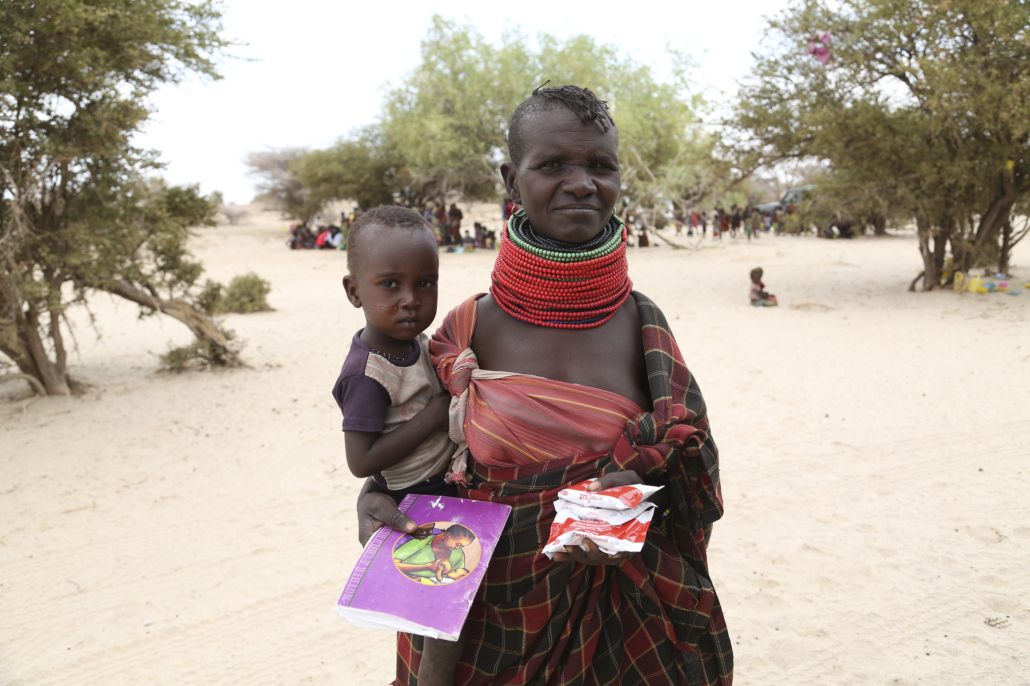Mary’s Meals is Reducing Hunger in Ethiopia
 As of 2022, Ethiopia has 123 million citizens, making it Africa’s second most populous country. With a fertility rate of 4.6 children born per woman, projections have indicated its population will have significant growth moving forward. This has exacerbated the problem of hunger and poverty among Ethiopians. One organization, Mary’s Meals, noticed Ethiopia’s need for support and is attempting to reduce hunger in Ethiopia.
As of 2022, Ethiopia has 123 million citizens, making it Africa’s second most populous country. With a fertility rate of 4.6 children born per woman, projections have indicated its population will have significant growth moving forward. This has exacerbated the problem of hunger and poverty among Ethiopians. One organization, Mary’s Meals, noticed Ethiopia’s need for support and is attempting to reduce hunger in Ethiopia.
Mary’s Meals
Mary’s Meals is a nonprofit organization that Magnus MacFarlane-Barrow founded. It works to provide school meals to impoverished communities around the world. The organization believes that every child should have one nutritious meal daily. Magnus argues that this meal should be available at school. He asks, “How can any part of the human family make progress if its children are without adequate food and access to at least a basic education?”
A meal provides nourishment, enables access to education and provides hope for a different future.
Ethiopian Outreach
Mary’s Meals spread to Ethiopia in 2017. It now supplies meals to 24,320 Ethiopian children in the semi-arid impoverished Tigray region in an effort to reduce hunger in Ethiopia.
It costs $2,794 to feed a child for a year, and people around the world share their resources to help feed these children.
School Feeding Program
Mary’s Meals has been serving Ethiopia since 2017, working with a trusted in-country partner to deliver and support the sourcing, cooking and serving of meals to children in 36 places of education. Children in Tigray recently shared what a meal and education meant to them with Mary’s Meals staff.
Making a Difference
According to reports, Ethiopia is one of the poorest countries, ranking at 32, according to the Global Finance Magazine. An estimated 36% of children under the age of five have stunted growth. Ethiopia also has a very high school dropout rate, with an estimated 66% of children not completing primary school.
Because of these statistics, children attend school where they can receive a meal and an education which can be a changing point and a lift out of poverty. It can also be a bridge to a better tomorrow. Helena Finnegan and the organization believes this is the turning point for making a difference.
She shared that it is crucial to have a partnership to make a school-feeding program possible. Mary’s Meals’ in-country partner delivers the program with the commitment of dozens of local volunteers. The volunteers prepare, cook and serve the meals, ensuring that more than 24,000 children receive a meal. For many children it is the only meal they receive in 24 hours.
Devastation in Ethiopia
Mary’s Meals believes that its ability to continue providing meals throughout a sudden two-year civil war is a very great accomplishment as Tigray has been at the center of the conflict.
Since thousands of people had to leave their homes when this sudden conflict occurred, Mary’s Meals’ trusted in-country partner was able to pivot from feeding children at school to delivering emergency food to more than a dozen centers in Mekelle where people sought refuge.
Visiting Ethiopia
When asked about their hands-on work done in Ethiopia, Helena Finnegan said, “While periodic in-country visits are needed to provide support and check on program status and impact, etc., these visits are undertaken in conjunction with other regional trips to maximize outreach efficiently. During the two-year conflict, it was not possible to travel to Tigray, and communications were sporadic, so this recent visit to reconnect and ensure support was particularly meaningful for everyone.”
Improvement
As Mary’s Meals’ founder, Magnus MacFarlane-Barrow says, “We always want to reach the places where life is most difficult for children, where people are suffering the most…In the many countries in which we serve such as Ethiopia, Haiti, South Sudan, Syria and Yemen, that is made even more challenging due to conflict and climate shocks.”
After 21 years, Mary’s Meals has created and grown a well-organized, efficient and low-cost school feeding model for the students of Ethiopia who are unable to afford meals outside of school.
Looking Ahead
When asked about the future, Helena Finnegan said, “A visit this summer enabled us to review the situation, meet with the partner and communities to determine their needs and the best ways to move forward in re-establishing the feeding programs back in schools/places of education.
We are looking forward to partnering with the local Tigray communities as they work to re-open schools, which will be a process. In many cases, that requires repairing and rebuilding schools and the kitchens where food was prepared and cooked and coordinating the reestablishment of an in-school education program.”
Mary’s Meals will continue to grow and reduce hunger in Ethiopia using the skills it has developed over the years since establishment.
– Abigail DiCarlo
Photo: Flickr
